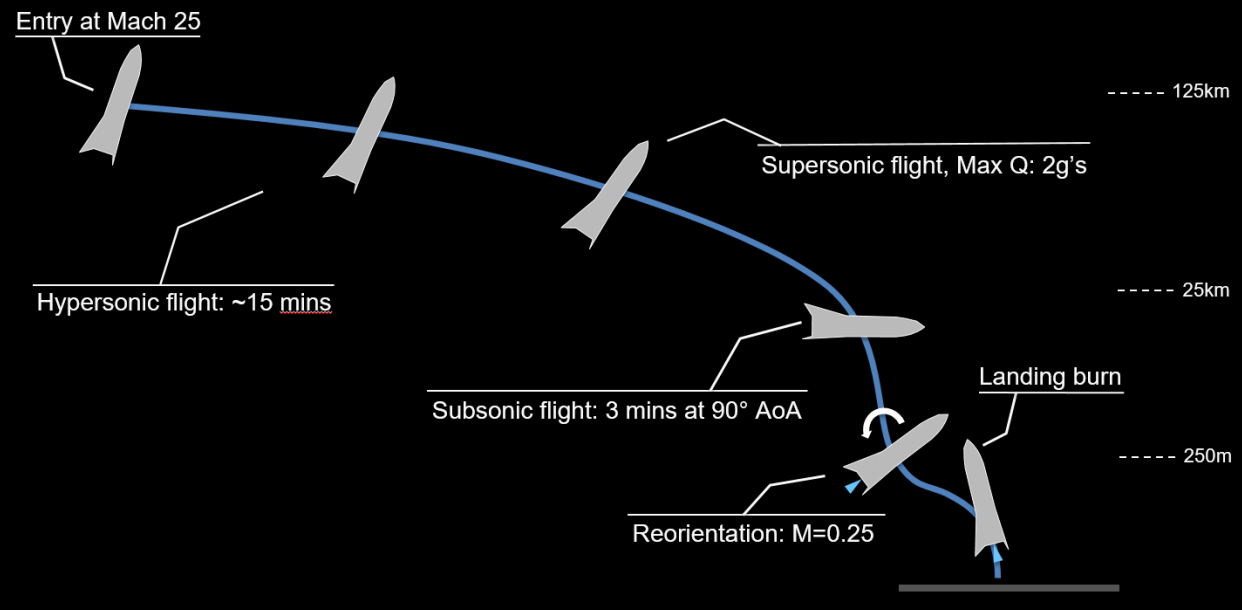Copyright 2019 Robert Clark
I remember thinking when reading of the debate about reusable vehicles between proponents of horizontal winged and vertical propulsive landing that all this debate was about a measly 100 m/s delta-v. The reason is whether you use wings or not almost all the speed of orbital velocity is going to be killed off aerodynamically on return. For even for vertical landing, the stage entering broadside will be slowed to terminal velocity, ca. 100 m/s. This is only about 1.3% that of orbital velocity of 7,800 m/s.
This was confirmed by a graphic just released by SpaceX about the BFR’s Starship upper stage reentry:
As discussed for example in this article:
Here is Elon also discussing how the Starship will land on Earth, including the low terminal velocity, and low final landing burn:
How SpaceX's BFR Rocket Will Land - Elon Musk Explains.
This shows for the Starship it only has to fire the engines at about Mach 0.25, 80 m/s. So it only has to kill off 80 m/s propulsively. But with the Starship just needing to kill off a 80 m/s velocity with a 3,300 m/s Raptor sea level exhaust velocity, about 330s Isp, by the rocket equation the mass ratio to do this is e[80/3300] = 1.025. Subtracting 1 from this is the ratio of the propellant required to the dry mass. The tanker version of the BFR upper stage, i.e., without the passenger quarters, will have a dry mass of ca. 50 tons (compared to the 85 tons of the Mars Colonial Starship version.) This means you only lose 1.25 tons for the landing.
But a rocket equation estimate using a 356 s vacuum Isp for the sea level raptors gives a ca. 40 ton payload for the tanker version as an SSTO.
See for example here:
Then the 1.25 tons lost due to propellant kept on reserve loses ca. 3% of the payload due just to the reserve propellant required. You also lose a proportion due to thermal protection system and landing legs but that’s also true for the TSTO.
However, because of the huge amount that needs to be kept on reserve for a first stage booster of a TSTO for slowing the booster down for reentry and for boost back to the launch site as well as for final landing approach, you can lose 40% of the payload for full reusability as indicated by the Falcon 9. Actually, for the BFR for full reusability Elon has said it will lose 50% payload off the expendable version.
Because of this huge loss for reusability for the TSTO, on a percentage of the rocket size basis, and therefore also on a cost basis, the SSTO is more cost effective.
The advantage of the SSTO becomes even greater when you add altitude compensation nozzles. Used on a TSTO this can improve the payload ca. 25%. But on a SSTO it can improve the payload 100% or even more.
Bob Clark




